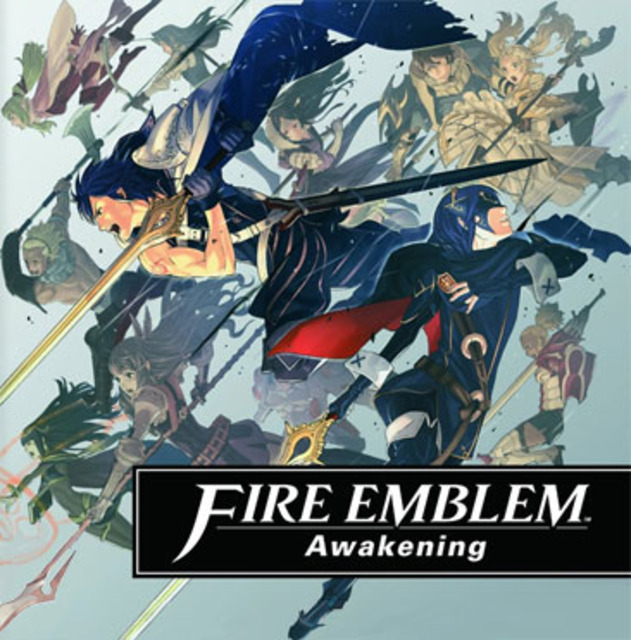Awakening is probably the most quality 3DS title we’ve seen since Super Mario 3D Land.
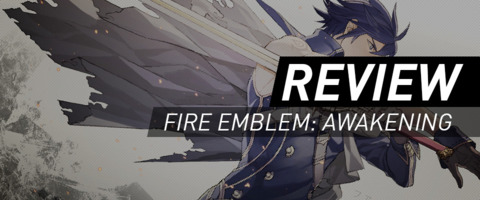
Outside of Japan, the Fire Emblem franchise is probably best known for their characters that appear in Super Smash Bros. You know the ones, Marth, Ike, and Roy? What you may not know is that the games in the Fire Emblem series have been influencing the development of strategy games since 1990, when the first game, Fire Emblem: Ankoku Ryū to Hikari no Tsurugi was released in Japan for the Nintendo Entertainment System. Back then it was revolutionary, being one of the first Eastern-style tactical role playing games to be released. It was developed by Shouzou Kaga, who went on to make the beloved Advance Wars series, and featured an engaging, Western-style medieval setting filled with rich characters and an enthralling story. Since then, twelve more Fire Emblem games have been released, adding to and expanding the franchise. Despite the popularity of these games in Japan, the series didn’t reach foreign shores until 2003, when Fire Emblem was released for the Game Boy Advance. The games that have been released since then have all experienced a small cult following (myself included), decent review numbers, and modest sales outside of Japan, but have never reached popularity levels high enough to break into the mainstream gaming industry’s limelight. However the series’ latest entry, Fire Emblem: Awakening, might just be the game that breaks that trend.
At its core, the gameplay in Fire Emblem is what has always made the series great, and it’s no different in Awakening. In every chapter you’re presented with a gridded battlefield, covered by various terrain, strategic locations, enemy troops, and your own army. The game is turn based and, while the combat system is simple on the surface, once you get into the latter chapters of the game it gets incredibly complex. It’s based off of a rock-paper-scissors “triangle” system of weapons: axes beat lances, swords beat axes, and lances beat swords. Player stats determine everything from movement range to the number of attacks a character can make per turn. While some complain that this triangle system makes the game too simple, it’s the way the developers build on top of that system that makes combat truly strategic and interesting. You may have a knight on a pegasus who can travel over any terrain without being slowed down, but if you leave that character in range of an archer, they are not going to last very long. But if a mage is coming after them? Then they’ll be fine. It’s these types of strengths and weaknesses unique to each class that make every move carefully calculated and the difference between a win and a loss.
At its core, the gameplay in Fire Emblem is what has always made the series great, and it's no different in Awakening
In the Fire Emblem series, there are no generic characters. Every member of your army is unique and has a backstory and character arc to explore, if you take the time. As your characters level up, you can use seals to change classes and evolve them into stronger unit types. Due to the series’ characteristic permadeath system, if one of your characters falls in battle they are gone for good. However, Awakening is the second game in the franchise (the first being the 2008 DS remake of Fire Emblem: Shadow Dragon) to introduce a “Casual” mode, where your fallen units are only gone for the battle, not the entire game. While I appreciate that the reasoning behind the addition of this casual mode is mostly to get more people playing the game, I would heavily advise against going that route. What has made the Fire Emblem series so great in the past is the way you’re sometimes forced to frustratingly shut off your game without saving, knowing exactly what boneheaded move you made that got a character killed and that, to save your favorite character, you’ll have to start the battle over from the beginning. This forces you to either accept your losses (a feat of strength I am incapable of) or to to think about what went wrong, and what you can do to improve the next time around.
Fire Emblem games are also known for their Support system, wherein units fighting next to one another on the battlefield form bonds that influence stat boosts whenever those characters are battling in the same area. In Awakening, this system is taken one step further. If a male and a female unit reach the top rank support score with one another, one will ask for the other’s hand in marriage. Down the line, those marriages yield children who eventually fight alongside their parents on the battlefield. These new characters possess the combined traits of their parents, which can really influence your game for better or worse. I really enjoyed this addition to the franchise, as it greatly influenced my decisions in battle, adding another layer to the overall strategy. I was constantly having to think about which characters I’d like to see together, and in which situations I could get them fighting alongside one another. At first glance it didn’t seem that getting to play matchmaker would be all that interesting, but as I played the game and slowly fell in love with the characters I couldn’t help but find glee in influencing who fell for whom. Playing God and making sure my OTP (that’s one true pairing, for those of you not on Tumblr) turned out the way I wanted has never been so much fun.
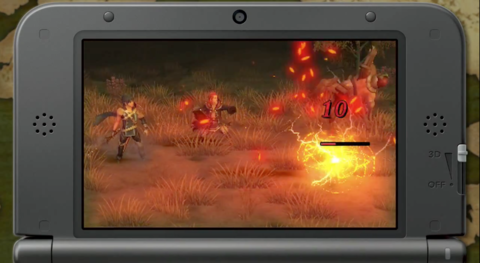
Between each battle you’re presented with an overworld map, where each chapters shows up as a destination. Enemy units outside of the game’s storyline also show up on this map, and you can use them to grind and get your units strengthened up if you’re having particular trouble proceeding. You can also use this map to travel back to old locations, checking out the wares that each place has on sale and tweaking and restocking your army before plunging back into the fray. The item system in Awakening is an impermanent one: Weapons, magical tomes, potions, and elixirs all have a set number of uses. After they’re used up, those items will break and disappear, so you’ll want to save up as much money as possible with every battle to keep your army well stocked. By the latter chapters of the game I had done so much grinding that I didn’t really find myself lacking in resources, so you won’t be constantly scrounging around for equipment near the end.
There are 25 chapters to the main game, not counting the prologues and epilogues, and there are an additional 23 “Paralogues,” which take place adjacent to the main storyline. These paralogues tend to have inconsequential stories, but are a goldmine for finding new characters to join your roaming band of warriors. For example, the first paralogue in the game has you save a village from being attacked by bandits. One of the mandatory units in your army for that battle is a young villager you meet there named Donnel. If you want Donnel to join you after the battle, you have to get him to level up once, but the process of doing that is very difficult, as he is just a weak villager. In spite of the necessary babying early on, recruiting Donnel was easily one of the best things I did in my early game, as he quickly becomes a behemoth, and is now one of the strongest members on my team. This is just one example of the many different treasures, items and units alike, that you will find in pursing the game’s optional content.
While it’s common in SRPGs (strategy role playing games) to give your character a name, the character creation process that Awakening starts with is far more in-depth, and akin to something you’d see in a game like Dragon Age or Skyrim. Along with naming your character, you can also pick your character’s sex, hair and hair color, face, and voice actor, which is relatively unheard of in the genre. This process does a great job of immersing you in Awakening‘s world, where you wake up with no memories and soon take on the role of tactician in the army of Ylisse. The story of Awakening is a wonderful one, filled with great characters, mystery and intrigue, and plenty of conflict set against some common themes not usually explored in SRPGs. The game will ask questions about war and violence that will make you think about what exactly you’re solving by fighting. All of these elements, coupled with the wonderful localization done by 8-4, Ltd. and the game’s stunning CGI cutscenes, make for a game that feels more polished than most AAA titles.
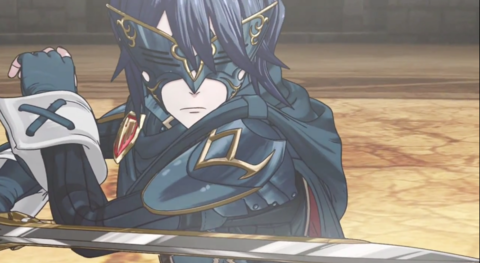
Throughout Fire Emblem you will be presented with a number of gorgeously-animated cutscenes with the most unique animation style I’ve seen in a long time (seriously, I want a Fire Emblem movie/anime in this exact style. Make it happen, Nintendo!). Outside of those precious moments, the majority of the game is rendered using in-engine graphics, with most story moments featuring an overlay of the series’ signature character portraits. However where the game really shines graphically is in the way it utilizes the 3DS’s 3D mode. Normally I keep my system’s 3D turned off, as I tend to find it gimmicky and distracting. However Awakening‘s 3D effectively uses the added dimension to enhance the experience, taking the battlefield grid and adding depth to it, as though you were looking out over it from a birds-eye view. Outside of battle the 3D is no slouch either, layering the on-screen UI elements and bringing gravitas to the in-game cutscenes. Once, while in the midst of an intense battle, I thought a fly was buzzing past my 3DS’s screen. I brought up my hand to brush it away, only to realize that it was a bird flying over the battlefield. It’s small touches like this that really make Awakening stand out as a game that was made with the system in mind, but not detrimentally so.
If there’s a trend in gaming that I tend to dislike almost as much as gimmicks like 3D or motion controls, it’s social features and downloadable content. Yet Fire Emblem: Awakening is another shining example of how these modern gaming trends, when executed in the proper manner, can be made bearable and sometimes even enjoyable. The Fire Emblem series has been notoriously resistant to multiplayer in the past, garnering much criticism for its absence in Radiant Dawn, the Wii’s entry in the franchise. In 2010′s Fire Emblem: Shadow Dragon, multiplayer was added to the franchise for the first time, allowing players to battle one another over the DS’s WiFi connection. In Awakening, Intelligent Systems (the game’s developers) have pivoted in a new multiplayer direction, allowing players to encounter each other using the 3DS’s StreetPass functionality. Encountered armies show up at various locations on the overworld map, where the player can interact with them by recruiting the team leader to their team, buying and selling goods, and meeting them in combat. While StreetPass-encountered armies are controlled by the game’s AI instead of the player, it’s still a neat way to be able to interact with other characters and further your armies resources and the time you can spend with the game. In addition to this, players in the same area can team up to take place in Dual Battles, where you combine your army with another player’s to take on difficult enemies. While I wouldn’t have minded some sort of asynchronous multiplayer mode (mailing chess moves back and forth between friends comes to mind here), after the lukewarm reception to multiplayer in Shadow Dragon I can understand why the developers decided to try something new with the game’s social aspects.
Another way to boost your gametime and extend Awakening‘s replay value is through the game’s DLC. While most of the DLC is paid, there is some free content in the form of rare items and the ability to summon teams from past games to your map to trade, fight, or recruit members. Paid DLC comes in the form of map packs, some featuring challenging battles and others containing small stories that can be played through. Intelligent Systems has a lot of DLC lined up for the foreseeable future, and considering that the real meat of this game is to challenge yourself and see what kind of difficult situations you can get yourself out of, I think it’s just about all worth checking out.
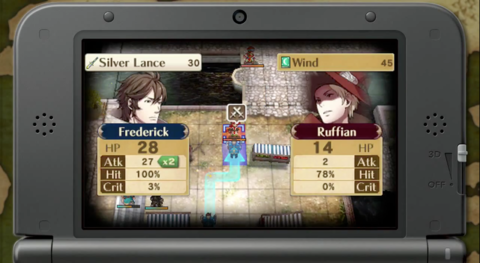
Overall, Fire Emblem: Awakening is a very solid game, probably the most quality 3DS title we’ve seen since Super Mario 3D Land. While some decisions, like the presence of a casual mode, irk the hardcore Fire Emblem fan inside me, every part of the game feels extremely well thought out and polished. It has the same strategic gameplay, with its triumphant wins and crushing losses, that many have come to love the Fire Emblem series for, and is a great jumping on point for newcomers to the series or genre. With interesting characters and a decidedly unique story, especially for this franchise, there are plenty of reasons to keep playing even if you’re not especially fond of the gameplay. It keeps the core of what makes Fire Emblem such a great series, while adding features and depth where it improves the overall experience. I’ve spent God knows how many hours agonizing over whether I really want to risk a certain character by moving him to a certain location, not because he’s the only one to move there, but because I really want Donnel and Lissa to hit it off and they can’t do that if they have some third wheel butting in all the time. To clarify, what I’m trying to say is that Awakening is strategy gaming at its finest. Nothing feels overcomplicated, but nothing feels too simplistic either. The game eases you into every situation, not suffering from the pacing problems or difficulty spikes that other forays into the strategy genre struggle with.
If you have a 3DS and have been waiting for that one game that makes the whole system worthwhile, there’s a good chance Fire Emblem: Awakening is the game you’ve been looking for. I definitely recommend giving it a look.
This review was originally published on March 1, 2013 on Blue Sun. It's been reposted here for posterity.
